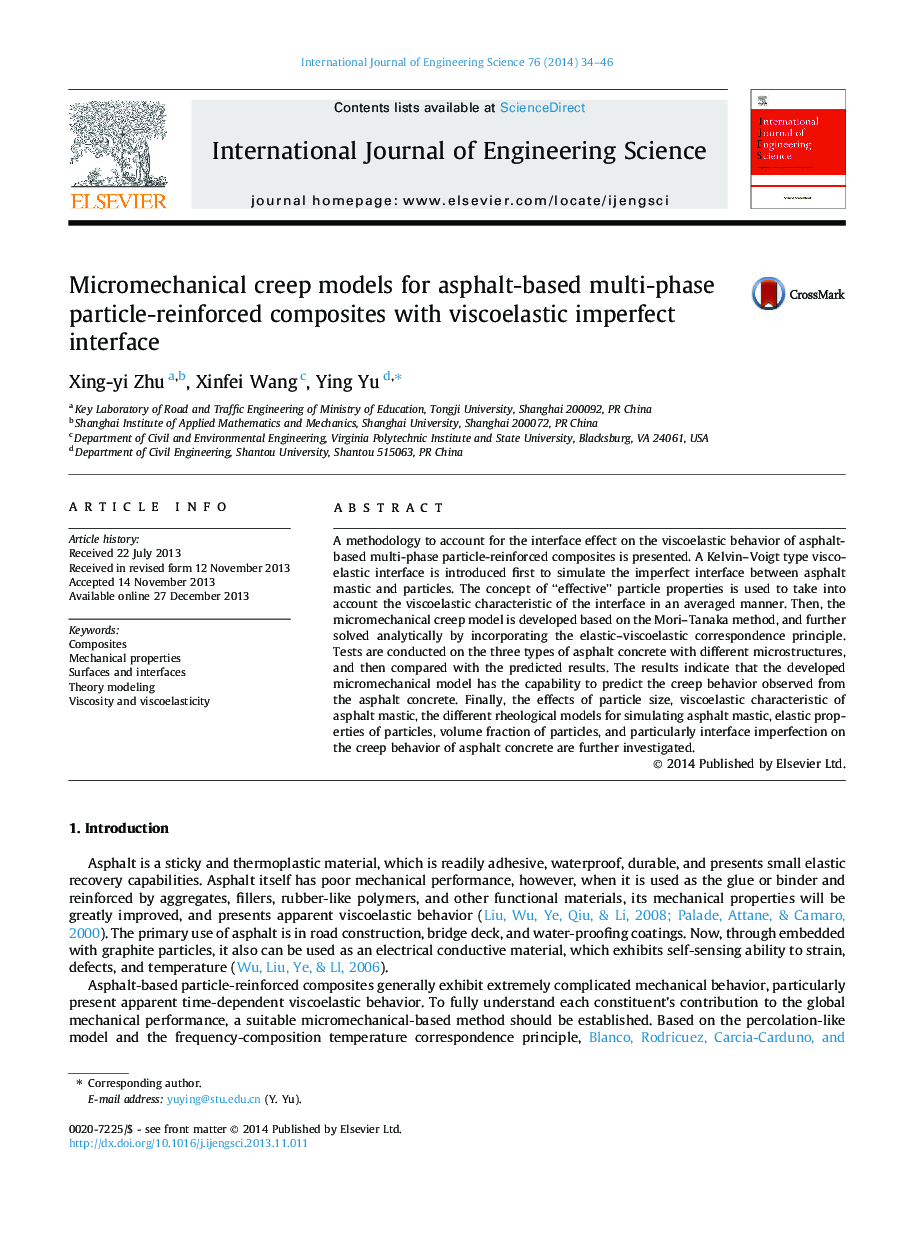| Article ID | Journal | Published Year | Pages | File Type |
|---|---|---|---|---|
| 824930 | International Journal of Engineering Science | 2014 | 13 Pages |
A methodology to account for the interface effect on the viscoelastic behavior of asphalt-based multi-phase particle-reinforced composites is presented. A Kelvin–Voigt type viscoelastic interface is introduced first to simulate the imperfect interface between asphalt mastic and particles. The concept of “effective” particle properties is used to take into account the viscoelastic characteristic of the interface in an averaged manner. Then, the micromechanical creep model is developed based on the Mori–Tanaka method, and further solved analytically by incorporating the elastic–viscoelastic correspondence principle. Tests are conducted on the three types of asphalt concrete with different microstructures, and then compared with the predicted results. The results indicate that the developed micromechanical model has the capability to predict the creep behavior observed from the asphalt concrete. Finally, the effects of particle size, viscoelastic characteristic of asphalt mastic, the different rheological models for simulating asphalt mastic, elastic properties of particles, volume fraction of particles, and particularly interface imperfection on the creep behavior of asphalt concrete are further investigated.
